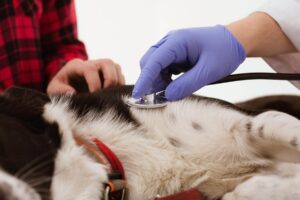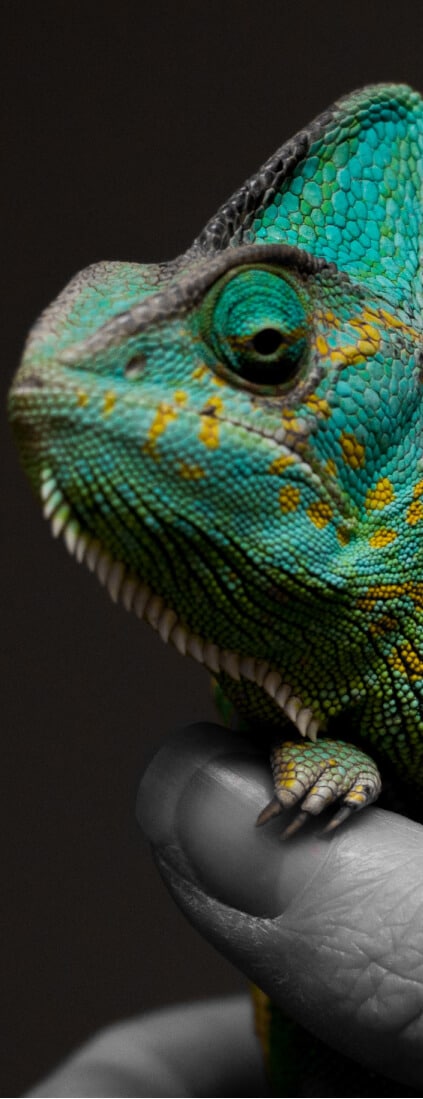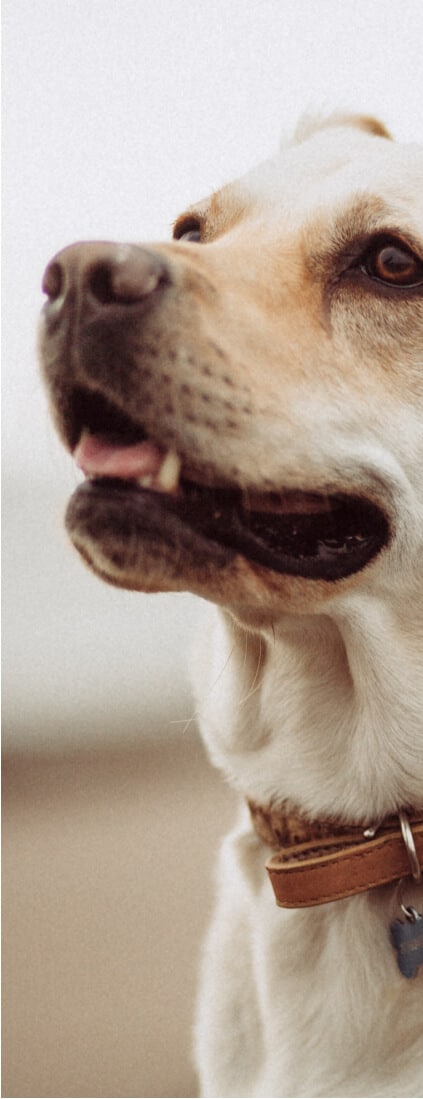Watching your dog reach the end of their life is an emotional and difficult experience. As a pet owner, you want to do everything possible to maintain their quality of life and ensure a peaceful, natural death, but it can be hard to know what’s best.
You’ll be faced with end-of-life decisions, including whether to provide hospice care at home or and/or opt for humane euthanasia if their suffering becomes too great.
If you’re considering allowing your dog to pass naturally at home, you might have some questions: What should I expect? How do I make them comfortable? When should I call for help?
This guide will walk you through the signs that a dog is nearing the end of life, practical ways to provide comfort, and how to ensure their final days are peaceful.
Signs Your Dog is Nearing the End
As dogs approach the final stages of life, recognizing the changes in behavior and physical condition that may occur can help pet owners navigate the dying process with greater understanding.
Your dog may experience:
- Loss of appetite and disinterest in food or water, contributing to weight loss
- Increased sleep and decreased responsiveness to stimuli
- Difficulty moving, stiffness, or weakness
- Incontinence, with challenges controlling bladder and/or bowel movements
- Disorientation, appearing confused in familiar surroundings
- Difficulty breathing or irregular, increased or decreased respiratory patterns
- Restlessness or discomfort
You may notice occasional good days where your dog appears more alert or interested in food, toys and family members, but these may become less frequent as their condition progresses.
Monitoring your dog’s pet health during their last days helps ensure they remain as comfortable as possible. Regularly assessing their pain levels, appetite, and hydration can guide decisions about palliative care or humane euthanasia.
Certain health conditions, such as organ failure or heart failure, may contribute to difficulty breathing, weakness, and reduced energy levels. If your dog has been diagnosed with a chronic illness, consult your veterinarian about what to expect in their final stages, as well as guidance on end-of-life care and pain management options.
Providing Comfort During Natural Death
When supporting a dog through natural death at home, focus on comfort and reducing stress. Palliative care can make this transition as peaceful as possible.
Some pet owners explore alternative therapies like acupuncture, massage, or herbal supplements to ease discomfort and support relaxation. Always consult a veterinarian before introducing new treatments.
1. Create a Peaceful Environment
A dying dog benefits from a calm environment, where stress is minimized, and comfort is prioritized. Set up a designated area that minimizes stress and provides easy access to essentials.
- Use soft bedding and absorbent pads to manage incontinence
- Keep fresh water close to avoid dehydration
- Provide supportive cushioning for weak joints
- Maintain a dimly lit, quiet space to promote relaxation
- Utilize temperature control, such as heating pads, if they appear cold. Be sure to monitor heating sources to ensure the pet does not get overheated
- Put something with your scent nearby to help them feel safe
2. Make Sure Food and Water Are Within Their Reach
As their appetite diminishes, feeding should focus on foods they are willing to eat. Loss of appetite is common, but hydration and nutrition play a key role in supporting your dog’s health during this time.
- Provide bone broth or water-flavored alternatives to encourage drinking
- Serve soft, palatable and easy-to-digest foods, such as boiled chicken or wet dog food
- Consider syringe feeding if they refuse to eat. Know that this method can be stressful and noxious for the pet.
- Monitor for signs of dehydration, such as dry gums, sunken eyes, or skin tenting
3. Maintain a Familiar Routine
Sticking to a predictable schedule can help your dog feel secure. While they may no longer be able to go on walks, they may still enjoy sitting outside in familiar surroundings.
- Modify daily activities based on their energy level
- Keep interactions calm and reassuring
- Avoid forcing movement if they resist
- Allow them to rest undisturbed when necessary
4. Keep Them Clean and Comfortable
Reduced mobility and/or incontinence may lead to hygiene challenges, increasing the risk of skin irritation and infections.
These things can help:
- Keep clean towels and pet wipes nearby
- Change their bedding as quickly as possible when it gets wet or soiled. Give them a gentle brush now and then
- Use a warm, damp cloth for their face and paws, and more messy cleanups
- As mobility declines, your dog may experience fecal and/or urinary incontinence, making it important to use waterproof bedding and absorbent pads to prevent discomfort and skin irritation.
5. Cuddle and Stay Close to Them
Dogs rely on their pet owners for comfort. Even if they are less interactive, they still feel better having you around. Sometimes just sitting quietly with them is all they need to feel safe. Talk to them softly, and give them gentle pets if they want them. Every dog is different – some want lots of attention, others just want you nearby. Depending on their condition, some dogs that are painful or uncomfortable will prefer to have minimal handling.
- Sit near them, speaking softly
- Offer gentle touch and petting, based on their response
- Keep familiar scents nearby, such as a piece of clothing
- Respect their need for both companionship and solitude
When Natural Death Becomes Too Difficult
While many pet owners wish for a natural death, some dogs experience prolonged discomfort. An often verbalized desire is that they will “just go peacefully in their sleep”; however, unfortunately, this does not often occur. Making the decision between natural death and euthanasia is never easy, but prioritizing your pet’s life and comfort should always come first. If their suffering becomes too great, humane euthanasia may be the kindest option.
In-home pet euthanasia allows your dog to pass peacefully in a familiar setting at your preferred pace and timing, reducing stress in their final moments. It allows your dog to spend their final moments in the comfort of their home, surrounded by familiar sights, smells, and the people (and other pet family members) who love them most.
At Compassionate Care, we provide 24/7 in-home euthanasia services to pets in Portland, helping pet owners navigate this emotional decision. Our experienced veterinarians ensure the process is calm, unrushed, and guided by your dog’s and your family’s needs.
We’re here to answer your questions, support your decisions, and help you say goodbye in the most loving way possible.
Kind Words From Families We’ve Helped
Choosing to euthanize a family member is never easy, but many pet owners find comfort in knowing their dog’s final moments were peaceful. These words from families we’ve supported may offer reassurance:
“Dr. Trish was incredibly kind, caring, and gentle. She explained everything step by step and made the process as peaceful as it could be for Basil and for us. She took a heartbreaking day and made it a little less painful.”
“I cannot recommend this service enough. Everyone we talked to was so compassionate and understanding. Dr. Kerrie gave Winston the gentlest passing we could have hoped for.”
“We are forever grateful for the care Dr. Marie showed our family. Our dog passed in his favorite spot, surrounded by love. It was everything we could have wanted for him.”
Each story reflects the love, compassion, and dignity that we strive to provide for every pet and their family.
Final Thoughts
Allowing a dog to die naturally at home is a personal decision that requires planning and emotional strength. Making end-of-life decisions for your dog is never easy.
This is an incredibly difficult time, and it’s natural to feel uncertain about what’s best for them. Whether you choose to let your dog pass naturally or consider humane euthanasia, the most important thing is maintaining your dog’s quality of life, ensuring they are as comfortable and pain-free as possible.
Providing palliative care, hydration, and comfort can ease their transition. However, if suffering becomes unmanageable, pet euthanasia may be the most humane option.
Many pet owners find comfort in joining support groups for grieving pet owners. These groups offer a space to share experiences and receive guidance from others who have gone through similar situations.
After your pet has passed, you may choose cremation as a way to honor their memory. Some families keep the ashes in a special urn, while others scatter them in a meaningful location.
For those looking to honor their dog’s memory, some families choose to donate to an animal shelter, helping other pets in need.
Contact us anytime if you’re in Portland and need help with this difficult decision.
















